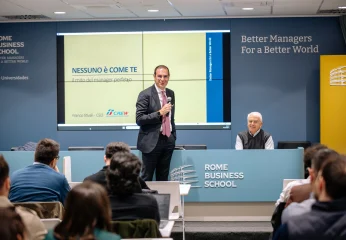Women in Fashion and 8th of March 2021

Article redacted by Michela Bonafoni, Trend Researcher, Business School Consultant, Program Director and teacher of the Master in Fashion and Design Management.
It would be interesting to imagine what Chanel, Lanvin, Madame Gres, Vionnet would say, the first women to be not only undisputed fashion creators but also founders and entrepreneurs of homonymous brands, if they were still alive; how, that is, they would look at the phenomenon of gender equality within a sector that, internationally, if in 2021 the presence of women grows by 95%, according to research by Nextail, Fashion Newest CEO’s Report on the presence of female leadership in the creative sector, it still has to make progress. And by reason of logic.
We know, in fact, how much and how company policies, aimed at understanding the logic of “diversity & inclusion” within their strategic assets, are working to ensure that the hot, indeed very hot, issues of environmental sustainability and the difference of cultures and of sexual orientation, gender equality and the presence of female quotas within even – and at times, above all – the fashion system are increasingly flanked.
But the start was there and it was important and massive. Just think of the historical change for some brands that have decided to replace female figures for the historically male roles of CEO (chief exectuive officier); this is how it went to Coty, Kylie Beauty, J.Crew, in the beauty sector, as well as to the historic fast fashion brand H&M which saw flying off in the name of Helena Helmersson, the first person outside the family who was not part the decision-making elite of the Swedish group; and again the appointment of Sonia Syngal as president and CEO of Gap and Lauren Holbert, first CEO of a sports brand, Dick Sporting Goods. But a question arises: how was this possible and why this sudden change? Simple? I do not think the answer is even sufficient, if we disclose that 80% of fashion school students are women as well as 75% of employees in the retail sector.
Not enough, we said, because we know that the Covid-19 pandemic and the consequent adaptation of most of the fashion companies to technology has begun to focus on the search for figures not necessarily coming from the world of Fashion – neither experience nor of studies – but of professionals and professionals able to perform tasks where the tech shakes hands with a “human” concept as necessary today, for the good of the company itself, yes, but above all of the global community.
So, we are happy that the trend is on the rise, just as we smile in front of the creative directors of the caliber of Maria Grazia Chiuri for Dior, who puts the feminist accent in every millimeter of her cultural research making them a dress, by Miuccia Prada who, despite in tandem – which she wanted, ed – with a genius like Raf Simons, she still teaches us that speaking and language are fundamental to the understanding of a decoding of current affairs that only fashion can render aesthetically ethical. And again, the teaser we are waiting for becomes evident of a return of Phoebe Philo after Celine, which if it does not initially bring interesting numbers will surely make us jump from the chairs in front of our screens for the beauty of her fashion.
And there are and still would be names, especially if we were to examine the young talents, among the most affected by the pandemic economic crisis, who see women active in their creative intelligence but lacking resources to move forward.
Why?
Here, the answer and is really easy: because a Fashion System is needed not only in some parts of the world but also, for example, in Italy, where the Made in Italy label, once it passes through any area, must and must necessarily remedy by bringing together minds and workers who bring the second economic voice of the Bel Paese to understand that without a system there is no future, just as without inclusion and respect for gender there can be no democracy.
The road, if we consider important factors such as the mere fact of having to talk about it again and again also to the students of the largest and most important international universities, is still long and will inevitably have to collect the voices, still too silent, even of the male exponents of a sector that still holds the positive sign on their side and that should take an example from the creative director of Gucci Alessandro Michele who with the “Chime for Change” project puts gender equality in the first place, analyzing it, raising funds, inviting reasoning and respect, raising the voice against gender violence that goes beyond the clothing content while embracing it, becoming the backbone of an inclusiveness that if it is fashionable must, however, no longer go unnoticed or relegated only to numbers, but bring knowledge and community attention to understand and understand, to listen and express, how society changes if in every sphere it re we will go out to bring about a change.
And fashion knows it. And you can start from fashion. This is what history teaches us. We will have to teach this to those who are there today and to those who, together with us, will contribute to writing new chapters of a global existence.
To do this, however, concrete examples are also needed from those who try to govern our democracies because if we do not start from politics to understand how much the presence of women at the top of certain fields is today more necessary than ever, we will find ourselves analyzing a trend in increase only in the partial and not in the general totality of global employment.
So, away with mimosas at least for a day, but flowers all year round on the benches of power in order to inebriate the senses and consensus of that diversity and inclusion that has become the key to a padlock that, again and too many times, denies the opening of places inaccessible because they are dominated by an obsolete and sometimes dangerous patriarchy.
Not only on March 8th. On the way. Together.




